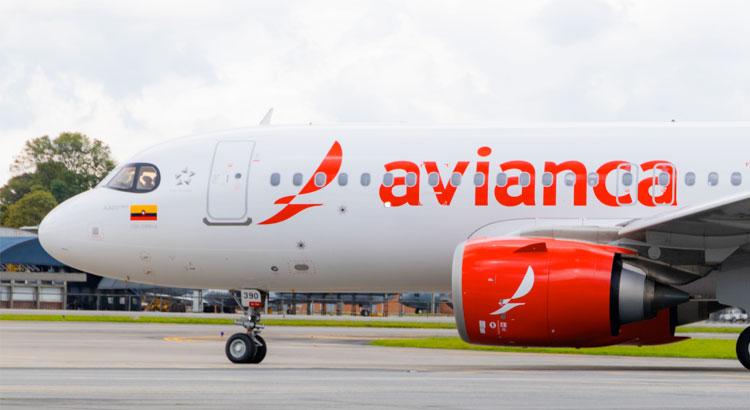SilverDoor shares insights from sustainability industry roundtable
SilverDoor sustainability industry roundtable: Cost pressures and inconsistent carbon data challenge corporate travel sustainability, but growing collaboration and Gen Z influence signal progress and future accountability. The article SilverDoor shares insights from sustainability industry roundtable first appeared in TravelDailyNews International.


Variation in the availability and methodology of carbon emissions data across the travel supply chain and the continued focus on cost are the main obstacles for corporates striving to meet their sustainability commitments. However, there is cause for optimism as increasing data collection and understanding is paving the way for increased collaboration and integration of carbon emissions reporting between the travel supply chain and clients to better inform sustainability strategies. These are the key findings from a recent industry Sustainability Roundtable hosted by global serviced apartment provider SilverDoor. Joined by clients EY, Clarity Business Travel and Graebel alongside property partner Edyn, the panel discussed the current state of the corporate travel and global mobility sustainability landscape. How are operators, agents and clients working together, what are the challenges and what will influence wider adoption and realisation of sustainability goals in the future?
SilverDoor’s Head of Communications, Victoria Jackson and Senior Client Programme Managers Al Butler and Amy Pammenter co-chaired the discussion and were joined by:
- Siân Ellis, Sustainable Procurement Lead for Ernst & Young LLP
- Sophia-Bella Pinnock, Sustainability Delivery Executive for Clarity Business Travel
- Seb Hutchings, VP Client Services for relocation management company Graebel
- Pete Richardson, Head of Sustainability and Risk for accommodation and hospitality operator Edyn
Key topics discussed were:
Cost and the data debate
Cost was discussed as the biggest barrier to enabling businesses to achieve their sustainability targets, both within travel programmes and across their wider operations. As businesses continue to retain a close eye on P&L, cost firmly remains king. Clarity’s Pinnock affirmed that “a lot of clients are still focused on keeping costs down.”
Edyn’s Richardson discussed how the changing geopolitical landscape is sharpening the focus on cost perhaps at the expense of sustainability for many business owners. However, on a practical level managing costs is the vital foundation to any business being able to operate and in turn being able to operate sustainably, “The economic uncertainty of the impact of Trump’s tariffs at the moment is holding back investment. So, you can only be a sustainable company if you are still a company. You can’t expect people to be putting sustainability above cost. It should always be people, planet and profit, because you need to be financially sustainable as well.”
Reiterating this point, Graebel’s Hutchings added global mobility managers are also under pressure to save costs within their programmes, however there are initiatives which are both sustainable and which could generate a cost saving such as utilising more sustainable and cost effective packing materials for household goods.
Alongside cost, fragmented data sets present challenges for corporates when working to establish a clear, consistent view of the environmental impact of their travel and operations. For EY’s Ellis, diversity of travel emissions between geographies is due “partly to budget, partly due to culture, but also levels of railway connectivity.”
For Graebel’s Hutchings diversity also raises challenges for relocation clients, “We’re very much in silos at the moment, I think it’s probably fair to say. And because there are so many different elements to a relocation, how do you get all of that data fed back from your supply chain. Legislation, certifications, implementations vary widely. It can be very challenging within certain frameworks to get the data you need.”
Collaboration, collaboration, collaboration: Is data the answer as well as the question?
Despite the variance, there is a strong appetite from clients for carbon emissions data to better inform and progress sustainability initiatives. SilverDoor’s Butler detailed the encouraging interest in collaboration from clients, “There is a willingness to learn and understand what initiatives we have in place.” A position supported by Clarity Business Travel which is developing carbon literacy documents, alongside various training and engagement opportunities enabling clients to better understand sustainability. EY’s Ellis also added that carbon data is used for sustainability “strategy and goal setting”.
Whilst carbon emissions data models are still being tried and tested, the panel acknowledged the critical need to be transparent. As Edyn’s Richardson explained, “A big part of sustainability is about transparency, and I don’t think you should be ashamed if you haven’t managed to hit your targets. (Companies might) just have to rethink what the target should be going forward.”
Greater collaboration and integration with the supply chain was also essential but should be underpinned by a degree of flexibility. EY’s Ellis detailed that whilst the procurement team undertakes surveys to understand what a supplier’s sustainability goals are in order to identify how and where they align with EY’s own goals, it is also important to be realistic and recognise that no two parties’ goals will exactly align so what you can do is “adapt to have some flexibility.” Ellis also added that having a sustainability sourcing framework in place is key to guiding supplier selection.
Whichever policies are in place there also needs to be consistency throughout a business as Graebel’s Hutchings points out, “policies need to align with the corporate goals.”
What does the future hold: Carbon caps and the strong-arm of Gen Z
Looking ahead SilverDoor’s Pammenter outlined that as the collection and application of carbon emissions data increases, we can expect to see a growing appetite for carbon budgets and in turn carbon caps alongside rate caps as part of RFPs and policies going forward, “We’ve had to stick with our rate caps. Yes, we’ve had to choose the best properties for them (clients), but they’ve also mandated that properties have to be providing their carbon calculator data.”
Alongside the advance in data is the advance of Gen Z which will continue to flex its muscles in the workplace and influence policy as it matures. The panel discussed the comparative sustainable behaviours demonstrated by this demographic, characterised by an internet and digital-first generation growing up with greater awareness of environmental challenges. As this generation matures the panel agreed it will bear its influence more and more as businesses work to future-proof their operation through recruitment of a carbon-literate generation.
SilverDoor’s Jackson concluded that in terms of influence alongside the advance of Gen Z actioning a bottom-up approach, increasing government directives on reporting are also ensuring carbon data will remain front and centre in shaping future sustainability policies not just for the travel sector and its clients but for all sectors worldwide, “Sustainability is an evolving journey requiring collaboration, innovation, and a commitment to continuous learning. As technologies advance and generational attitudes shift, businesses that remain flexible and open to new approaches will be in pole position to drive change that can make a real impact.”
The article SilverDoor shares insights from sustainability industry roundtable first appeared in TravelDailyNews International.
















































































